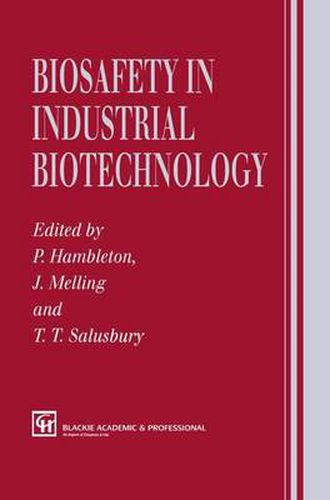Readings Newsletter
Become a Readings Member to make your shopping experience even easier.
Sign in or sign up for free!
You’re not far away from qualifying for FREE standard shipping within Australia
You’ve qualified for FREE standard shipping within Australia
The cart is loading…






This title is printed to order. This book may have been self-published. If so, we cannot guarantee the quality of the content. In the main most books will have gone through the editing process however some may not. We therefore suggest that you be aware of this before ordering this book. If in doubt check either the author or publisher’s details as we are unable to accept any returns unless they are faulty. Please contact us if you have any questions.
As an industry, biotechnology may be likened to the Hymn Book, being both ancient and modern. Whereas activities such as baking, brewing, the fermenting of foods date from our earliest attempts to control and utilise the environment, the application of recombinant DNA technology is recognised as being at the forefront of novel industrial development. Perhaps because of its association with processing foodstuffs together with the benefits derived from applications in the early organic chemistry and pharmaceutical industries, biotechnology has been regarded as being inherently safe. Yet unlike other modern industries, such as chemical and nuclear, where regulation has followed from incidents or accidents, modern biotechnology has been subject to close scrutiny and regulation almost from its inception. The process of regulation itself is somewhat unusual in that it was initially self-imposed by the very scientists who developed the fundamental techniques of recombinant DNA technology. They recognised the signific ance of their development but were concerned of the effects on humans and the environment of uncontrolled application of the new, powerful technology. Concern about the possible consequences of genetic manipula tion has undoubtedly been the driving force behind the regulations that are now in place in many parts of the world and which are the subject of this book. Safety issues in the biotechnology industry can be categorised under three headings: worker, environmental and consumer (product) safety.
$9.00 standard shipping within Australia
FREE standard shipping within Australia for orders over $100.00
Express & International shipping calculated at checkout
This title is printed to order. This book may have been self-published. If so, we cannot guarantee the quality of the content. In the main most books will have gone through the editing process however some may not. We therefore suggest that you be aware of this before ordering this book. If in doubt check either the author or publisher’s details as we are unable to accept any returns unless they are faulty. Please contact us if you have any questions.
As an industry, biotechnology may be likened to the Hymn Book, being both ancient and modern. Whereas activities such as baking, brewing, the fermenting of foods date from our earliest attempts to control and utilise the environment, the application of recombinant DNA technology is recognised as being at the forefront of novel industrial development. Perhaps because of its association with processing foodstuffs together with the benefits derived from applications in the early organic chemistry and pharmaceutical industries, biotechnology has been regarded as being inherently safe. Yet unlike other modern industries, such as chemical and nuclear, where regulation has followed from incidents or accidents, modern biotechnology has been subject to close scrutiny and regulation almost from its inception. The process of regulation itself is somewhat unusual in that it was initially self-imposed by the very scientists who developed the fundamental techniques of recombinant DNA technology. They recognised the signific ance of their development but were concerned of the effects on humans and the environment of uncontrolled application of the new, powerful technology. Concern about the possible consequences of genetic manipula tion has undoubtedly been the driving force behind the regulations that are now in place in many parts of the world and which are the subject of this book. Safety issues in the biotechnology industry can be categorised under three headings: worker, environmental and consumer (product) safety.